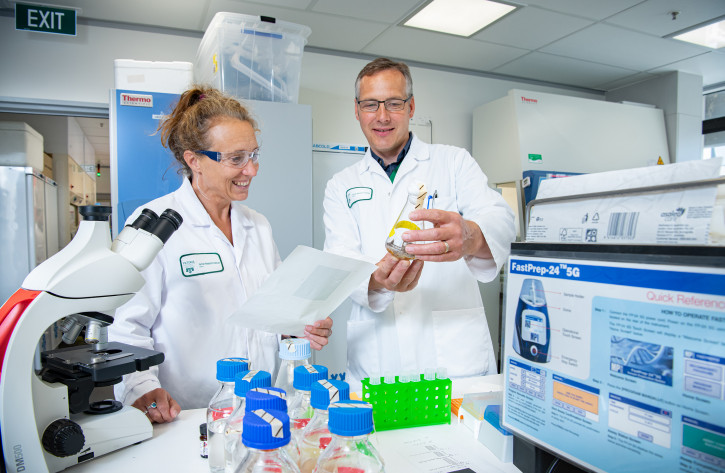Sugar water—not toxic solvents—are used to grow the fungi that the compounds are created from, making it cheap and environmentally-friendly to produce.

Dr Emily Parker, Victoria University of Wellington and Dr Matthew Nicholson, Wellington UniVentures
It’s no secret that some chemical pesticides can set damage in motion that reverberates through the environment for years. Now, scientists at Victoria University of Wellington are unlocking the bioactive potential of a fungus to manufacture a potent but natural class of insecticides that could improve the way we kill parasites and insects by reducing collateral damage.
University researchers have engineered a way to biologically synthesise a variety of natural compounds found in plants, fungi and other micro-organisms. While many of these compounds have the potential to form the basis of a range of bioactive natural products with anti-cancer, anti-microbial and pesticidal properties, the team's first commercial application of compounds manufactured in this way is a class of natural insecticides which will be used to control parasites on animals, and insect pests found in crops.
One of the problems with many chemical pesticides is that they don’t easily degrade—instead, they remain in the environment where they can upset the natural order of delicately balanced ecosystems. An insecticide that is synthesised from nature is less likely to cause those problems.
Features and benefits
Environmentally friendly
Safe for pets and humans
These natural compounds are extremely potent pesticides but are not toxic to mammals, meaning that they are safe for the animals and humans who are exposed to them.
Scalable
The provisional bioprocess means it can be easily scaled-up for efficient production of the lead compound.
Next steps
The researchers are working on a small number of key steps before seeking an investment partner to help them develop a market-ready product—and ultimately forming a spin-out company. These steps include:
- identifying a lead compound;
- refining the process for scaling-up the lead compound to demonstrate that it can be produced efficiently;
- determining the spectrum of activity of the parent compounds by testing them against a range of pests including parasites that are resistant to other classes of pesticides;
- assessing the lead compound to determine its suitability for formulation.
We are now seeking early engagement with interested individuals or organisations. Contact the Commercialisation Manager below to find out more.

